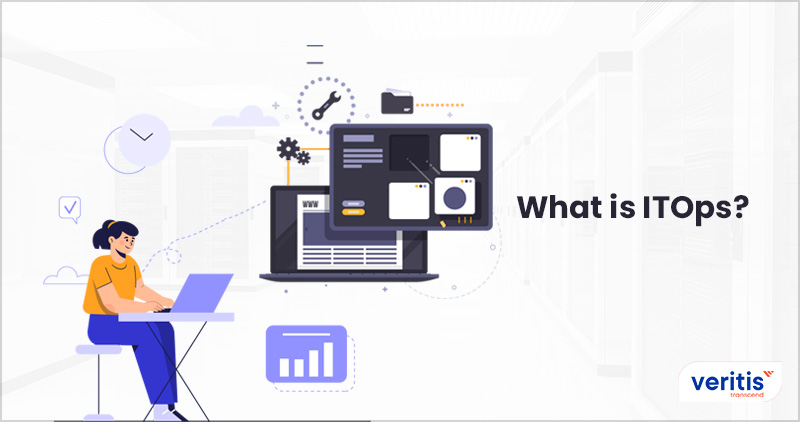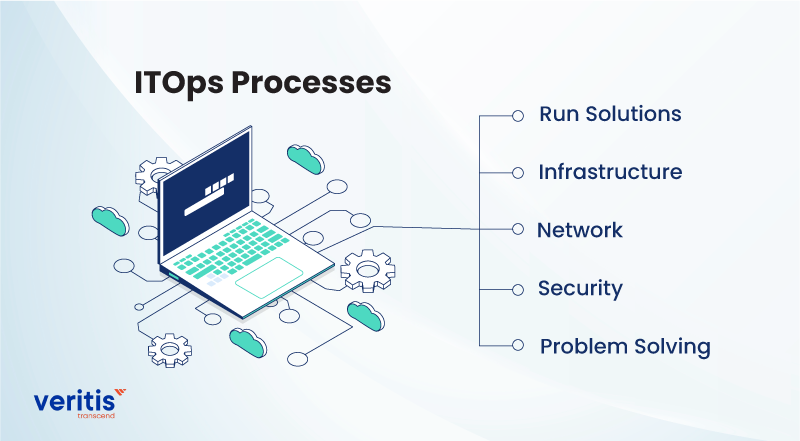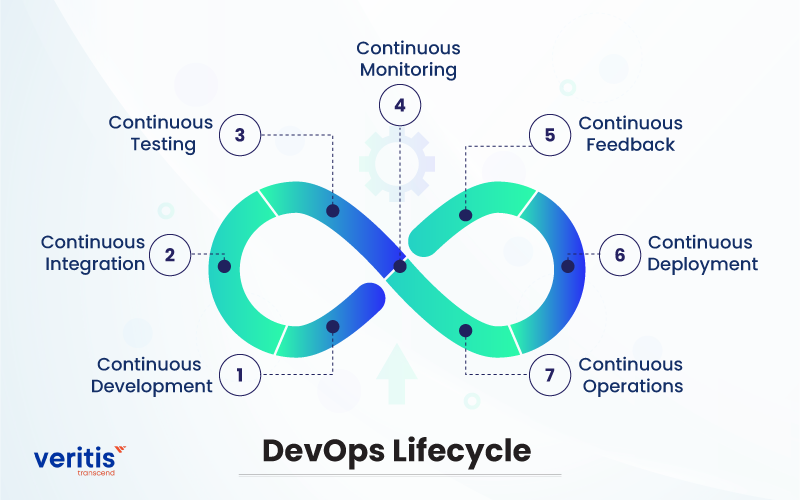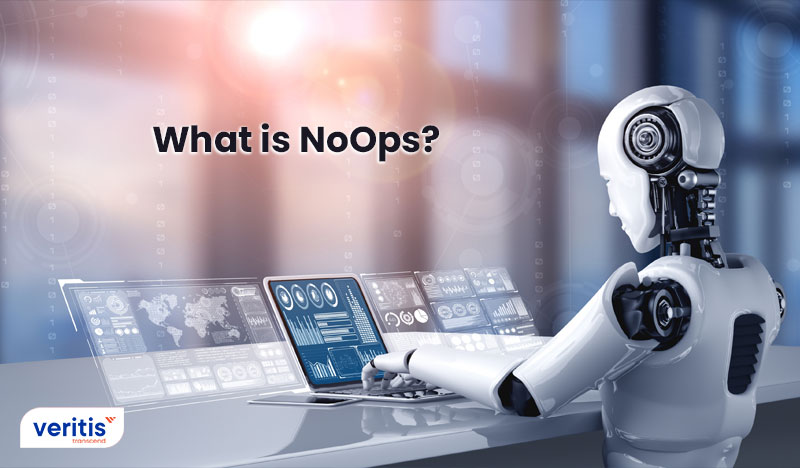
ITOPs, DevOps, and NoOps are technology management practices that assist enterprises to become as productive, and agile as possible. Comparing ITOPs, DevOps, and NoOps will help you understand the concepts around software operations and guide your company’s business requirements.
The top three technologies are now playing a vital role in IT operations, and they are running a business much more smoothly. These technologies are essential for organizing your business in the best possible way to carry out the digital transformation instead of maintaining the continuity of operations with uninterrupted services and a seamless work experience. Most IT firms have widely adopted ITOps and DevOps but NoOps is an emergent concept as it is new to the IT industry.
With the growing demand for machine learning, ITOPs, DevOps, and NoOps are gaining momentum for providing solutions to operational models. The implementation of top operational models will automatically increase your overall productivity.
Understanding the concepts of each tool is essential to structuring a delivery pipeline at an enterprise level. Before going a comparison between ITOps, DevOps, and NoOps. Let’s explore the concepts first.
Got Questions? Schedule A Meeting
What is ITOps?

ITOps (or) Tech Ops is the most traditional Ops that refers to managing all the physical and software components of an organization’s IT environment. It is responsible for the smooth running of a business by handling applications, delivery, maintaining services, and the underlying technologies administrated by a company’s IT members to its internal or external clients.
It includes maintaining networks, ensuring security, managing data center, system administrators, regulatory compliance, licensing, managing software, managing help desk, etc., which supports daily business operations. IT department can effortlessly manage all the IT operations and make the job easier by using IT Operations. It guides the business to be more secure, swift, and productive.
ITOps Processes

ITOps processes consists of 5 main aspects and let’s have a look at each phase of the ITOps processes.
1) Run Solutions
The primary purpose of having ITOps teams is to run solutions such as data backups, configurations, handling servers, and restoring systems after an outage or update. The aim is to optimize the performance and allocate the proper resource for the most effective delivery.
2) Infrastructure
Managing the IT infrastructure includes maintaining, provisioning, setting up, and updating all the software and hardware applications and cloud resources of the company’s IT infrastructure. These components include operating systems, hypervisors, network infrastructure, platforms, container environments, physical servers, application software, etc. The maintaining oversight of IT infrastructure is made on-premises data center or in the cloud.
3) Network
Network management is responsible for managing all network functions for internal or external IT communications. Network management is also involved in configuring and managing telecommunication lines. In addition, it allows authorized customers to secure remote access to the company’s network.
4) Security
Security management is an integral function of IT service management (ITSM). It deals with securing the hardware and software assets, implementing security within development operations, managing access control, and ensuring that security standards have reached across the IT environment of the organization.
5) Problem Solving
Event management or incident management is also known as Problem-solving, it can be divided into 2 types – preventive measures and reactive measures.
a) Preventive Measures
Preventive measures reduce the possibility of disasters and find the solution to anticipate and avoid any negative impacts on the IT environment.
b) Reactive Measures
This concept refers to cyber-attacks, critical situations, and other issue when implementing disaster recovery plans and help desk management services.
Useful Link: DevOps on AWS: An Introduction on How to Integrate Seamlessly
What is DevOps?

DevOps is a collection of tools and technologies that automate and integrate the process between the software development team (Dev) and IT operations team (Ops) to increase a company’s ability to deliver services and applications faster than traditional processes.
In simple terms, DevOps is nothing but removing the barriers between the development department and the operations department to increase the quality and speed of software deployment. A DevOps toolchain guides teams to tackle crucial DevOps functions like automation, collaboration, continuous integration, and continuous delivery (CI/CD) tools.
DevOps Lifecycle

DevOps lifecycle consists of seven phases. Both the developer’s team and operation teams work collaboratively from the start to the final stage of the product. Let’s have a look at each phase of the DevOps lifecycle.
1) Continuous Development
The continuous development stage involves the planning and coding phases of the product. Developers begin developing the code during the planning phase. There is no need to require any DevOps tool to plan the code, but there are numerous control tools to maintain the code.
2) Continuous Integration
Continuous Integration is the central pillar of the entire DevOps lifecycle. It is a software development practice that updates the code (or) add-on functionalities, and features are built and integrated into the existing code.
3) Continuous Testing
It involves developed software teams carrying out the continuous testing phase before the integration occurs, while other teams perform after the integration. In addition, quality analysis continuously tests multiple codes for bugs.
4) Continuous Monitoring
Monitoring the application’s performance is a crucial phase of the DevOps lifecycle where the application’s functionality and features have been monitored continuously to alert services for switches, software, services, etc.
5) Continuous Feedback
Continuous feedback is a peculiar phase to analyze and ascertain the final results of the software application. The feedback has two ways to consider – structured and unstructured. The structured feedback can be gathered through surveys and focus groups, while unstructured feedback is applied through micro-blogging sites like Facebook and Twitter.
6) Continuous Deployment
In this stage, the application of the final code is deployed on the production servers. It is also crucial to ensure that the code is deployed correctly on all the servers. The configuration management tool plays a vital role in executing the tasks quickly.
7) Continuous Operations
It plays a crucial role in the DevOps lifecycle to reduce downtime like scheduled maintenance. The process of continuous operations is to automate the release processes, allow developers to build a better version of the software, and detect problems quickly.
Useful Link: Top 10 DevOps Tools to Pick for Your Business
What is NoOps?

NoOps (or) No Operation is the new idea that completely automates a software environment from the underlying system infrastructure through technologies including machine learning (ML), and Artificial Intelligence (AI). As a result, there is no need for any operation team to manage software in-house.
With NoOps, developers can concentrate solely on writing and improving the software product’s code that improves the resources like management, security, infrastructure, product, and operations part of the lifecycle. Additionally, the service providers offer developers to develop software like resources, backups, patches, and the right cloud infrastructure to work independently without any interference.
Serverless architecture is the best example for NoOps software. The developer’s team aims to create their application and deploy them in serverless computing without interfering any operational or infrastructure considerations.
Operating the right tools in NoOps can achieve a faster deployment process than DevOps by running Platform as a Service (PaaS) or Function as a Service (FaaS) in the cloud. Moreover, NoOps can easily be adaptable for Product as a Service companies, small-scale applications, and start-ups.
According to the Deloitte’s annual Tech Trends report said that “The hyper-automation of cloud computing has created a NoOps environment where software and software-defined hardware are provisioned dynamically, setting talent free to transition into new roles and help drive business outcomes.”
Comparison Between ITOps, DevOps, and NoOps
| Details | ITOps | DevOps | NoOps |
| Work Process | It manages and maintains all the physical and software components of an organization’s IT infrastructure | It improves collaboration between developers and the operations team to increase the quality and speed of software deployment | It automates everything |
| Infrastructure build | It performs daily tasks and provides high-level technological guidance to maintain the company’s software infrastructure | DevOps allocates infrastructure depending on full capacity workload | NoOPs calculate the price of cloud resources based on budget purposes and take into consideration from minimum to maximum expected usage |
| Configuration | It permits network configuration auditing information to business partners, outside entities, and regulatory agencies | It configures middleware platforms, operating systems, and hardware | It configures cloud images (or) elastic application platforms |
| Capacity Planning | ITOps is the concept of maintaining and delivering all the applications, technologies, services, and infrastructure administered by a company’s IT staff | The developers department and operations department work collectively to determine where the application can operate | NoOPs set up cloud resources that begin slowly and ramp as fast as necessary |
| Testing | Application management teams play a vital role in testing | DevOps offers the productive equivalent infrastructure for testing | NoOPs provides dev self-provisions testing resources, which is equivalent to productio |
Final Thoughts on ITOps vs DevOps vs NoOps
There is no denying that every IT company depends on technology services to run their businesses smoothly but what is the ideal solution for your organization’s IT environment? Comparing ITOps, DevOps, and NoOps can be quite distressing for some time because it confuses picking the right tool for business.
Among the three, DevOps is the most widely implemented tool for improving workflow in the business. ITOps and NoOps will surely be crucial and as popular as DevOps in the next couple of years. However, one has to consider the current IT structure of your organization before settling on one concept or multiple concepts for your business. This is where IT firms seek Veritis’s services.
Veritis aims to help clients achieve their business objectives by offering world-class consulting, innovative ideas, IT solutions, and services with cost-effective solutions. Over a decade, we’ve built relationships with Fortune 500 companies, including several firms around the world. We understand our client’s requirements aptly, and recommend the best solutions without compromising on quality. So, reach out to Veritis and walk away with the best tools that fit your business.
Explore DevOps Services and Solutions Schedule A Call
[WPSM_AC id=13690]
Additional Resources:
- AWS vs Azure vs GCP: Cloud Cost Comparison
- Amazon Aurora Vs Amazon RDS Comparison: Which is the Best Database Service?
- MongoDB Vs RDBMS: Comparing the Big 2 Database Services
- Which Cloud has Better Private Connectivity: AWS or Azure or GCP?
- EKS Vs. AKS Vs. GKE: Which is the right Kubernetes platform for you?
- AWS Vs Azure Vs GCP – The Cloud Platform of Your Choice?